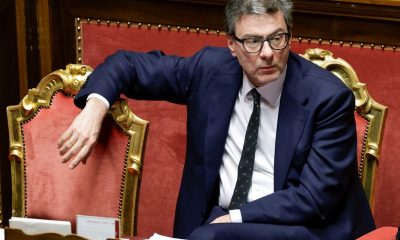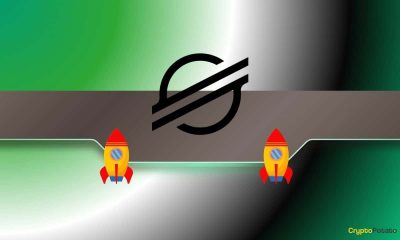Commodities
Nasdaq: the red Snap signal is lit before the rally

Major U.S. stock indices closed on the third consecutive day of growth, but today this rally has a chance to break.
Although the capitalization of Snap (owner of the social network Snapchat) reached only $27 billion yesterday afternoon, after falling more than 5 times, the company has already twice brought down the stocks of corporations valued at hundreds of billions and even trillions of dollars. In May, the collapse was triggered by the announcement that Snap would not meet its revenue and earnings targets. Now the reason was the Q2 report, published after the end of the main trading session.
It was worse than even the downwardly revised forecasts. The loss per share was 2 cents, not one. Revenue fell to $1.11 billion versus an expected $1.14 billion.
Shares of Snap, along with other battered tech stocks, were among the leaders yesterday, adding 5.42% at the close. But within minutes of the report, they collapsed 27.83% on the post-market.
Snap attributed the results to weakening demand on its online advertising platform. It cited a tougher economy, an iOS update in 2021, and increased competition. The company said that even quite healthy businesses have been cutting back on its operations because of cost pressures from inflation. At the same time, it said it wasn’t giving third-quarter forecasts because it’s incredibly difficult to forecast right now.
The market habitually extrapolated this situation to other companies, as it did in May. In particular, this led to a drop in shares of Alphabet, which has a capitalization of more than $1.5 trillion, by almost 3%. Shares of other technological giants also plummeted.
Meanwhile, Thursday was the third straight day of gains for major U.S. indices. The S&P 500 rose 0.99%, the Dow Jones Industrial Average rose 0.51% and the Nasdaq Composite rose 1.36%. Some analysts were already expressing hope that the “bottom” of the market had passed. But the latest events make it doubtful.
In many respects, growth was connected with cases when the statements exceeded downward revised forecasts. But gradually their weight is diminishing. According to Refinitiv, on Tuesday, of the 48 S&P 500 companies that reported earnings, 89.2% exceeded forecasts. On Wednesday, after 60 reports, they were 78.3%. And yesterday morning, when 91 companies already reported, that share dropped to 78%.
Some disappointments turn out to be very noticeable, although they are not always related specifically to the Q2 results. For example, AT&T stock fell 7.6% yesterday after its annual cash flow forecast fell – the 3-month results beat expectations. Shares of American Airlines fell 7.4% due to an anticipated slowdown in growth. Carnival lost more than 11% after it announced it had placed an additional share issue. United Airlines, on the other hand, fell just below expectations, with its stock plummeting by more than 10%.
Nevertheless, the market was generally up yesterday. Today, it’s going to be more difficult. Snap isn’t the only one with bad surprises after the close of the main trading session.
Shares of toy maker Mattel fell 2.8% as it said its earnings were hurt by a sharp rise in the dollar. Capital One Financial lost 4.9% after disappointing results. Intuitive Surgical shares plummeted 12.6% for a similar reason. And Boston Beer also lost 8.4% due to a decline in its annual outlook.
At the same time, the impact of Snap on the quotes of other companies on Thursday evening expanded like circles on water. Social networks were falling. For example, Pinterest stock was losing more than 7 percent. Advertising and related technology companies were selling off. In particular, Trade Desk stock was down about 7%.
A lot of other companies, from Apple and Microsoft to Walmart and Target, also rode this wave, albeit not as badly (down within a percent). Futures on major U.S. indices went into the red zone. So Friday does not promise to be an easy day. But Twitter is just reporting today, and whether the fall will accelerate or slow down may be determined by this very company.
Commodities
Oil prices rise; U.S. crude inventories plunge, Russia-Ukraine truce eyed
Commodities
India’s Reliance to stop buying Venezuelan oil over US tariffs, sources say
Commodities
Oil prices climb on Venezuela supply worries

 Forex3 years ago
Forex3 years agoForex Today: the dollar is gaining strength amid gloomy sentiment at the start of the Fed’s week

 Forex3 years ago
Forex3 years agoUnbiased review of Pocket Option broker

 Forex3 years ago
Forex3 years agoDollar to pound sterling exchange rate today: Pound plummeted to its lowest since 1985

 Forex3 years ago
Forex3 years agoHow is the Australian dollar doing today?

 Cryptocurrency3 years ago
Cryptocurrency3 years agoWhat happened in the crypto market – current events today

 World3 years ago
World3 years agoWhy are modern video games an art form?

 Commodities3 years ago
Commodities3 years agoCopper continues to fall in price on expectations of lower demand in China

 Economy3 years ago
Economy3 years agoCrude oil tankers double in price due to EU anti-Russian sanctions





























